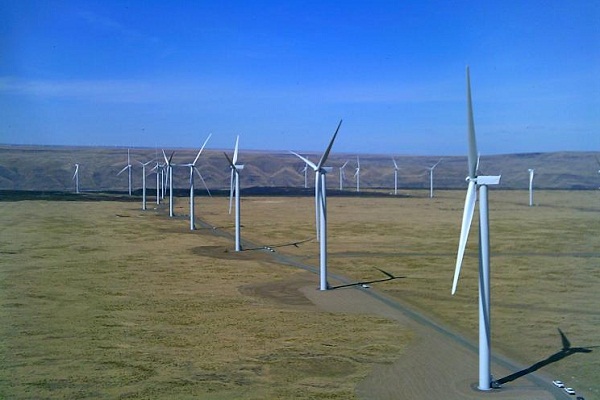It wasn’t just the threat of the expiring production tax credit that drove the U.S. wind power industry to a record-breaking year in 2012; wind was a competitve form of energy, and utilities wanted it.
So said Bloomberg New Energy Finance in a new compilation and analysis of the year that just was. The clean energy researcher reported that developers put nearly 13.2 gigawatts of new capacity into service in the U.S. in 2012, shattering the old record of 10 GW in 2009.

In December alone – before it was clear the 2.2-cents/kilowatt-hour PTC would be extended beyond the end of the year – the industry saw 5.5 GW installed in a mad rush to qualify for the tax break.
The PTC combined with factors within the industry itself to make wind power increasingly competitive, even with cheap natural gas in some places. Bloomberg said it believes the levelized cost of energy from wind in the Texas Panhandle could be less than $30/megawatt-hour, right in the neighborhood of the $25-$30/MWh that power from natural gas-fired plants goes for in the region.
“Equipment prices, as tracked via Bloomberg New Energy Finance’s Wind Turbine Price Index, have fallen by more than 21% since 2010,” Bloomberg explained. “Over the same period, performance of turbines, measured in terms of average capacity factor, has risen. These two effects combined have resulted in a more than 21% fall in the levelized cost of electricity for a typical US wind project since 2010.”
The result, according to Bloomberg analyst Amy Grace, was that “in most areas, utilities are buying wind power because they want to, not because they have to.”
Alas, the good times will not roll, even though the PTC was eventually extended for a year, and for projects simply under construction before the end of2013.
The problem is that as every project that could possibly be built soon got built in 2012, the pipeline for future projects dried up and blew away as though on a breeze.
“Asset financing for US wind projects crested in the first half of 2012 at $9.6bn, in preparation for the 2012 burst, and then plummeted to $4.3bn in the second half of 2012,” Bloomberg said. “As a result, the upstream portion of the industry has taken grievous hits. Companies that produce turbines, blades, and other components of wind equipment – including manufacturers such as Vestas, Gamesa, Clipper and Siemens – have all either initiated or announced layoffs.”
Bloomberg didn’t give a hard number forecast for 2013, but most analyst seem to think around 3 GW, maybe a bit more, maybe a bit less, is likely. That would be the puniest U.S. total since 2006, which saw just 2,428 MW installed. Beyond 2013, the industry is hoping Congress will go for a continuation of the PTC, but at gradually reduced levels until it disappears in 2019, in order to promote long-term investment in wind power.